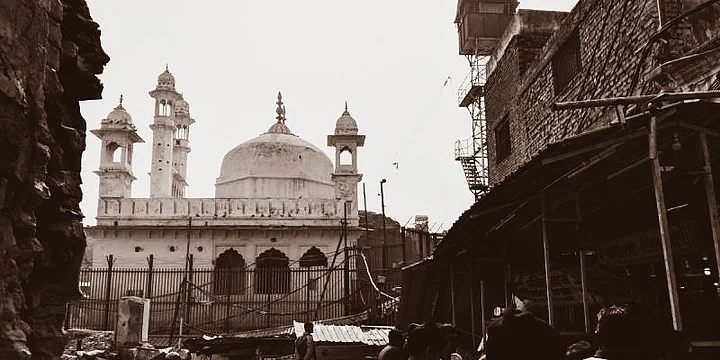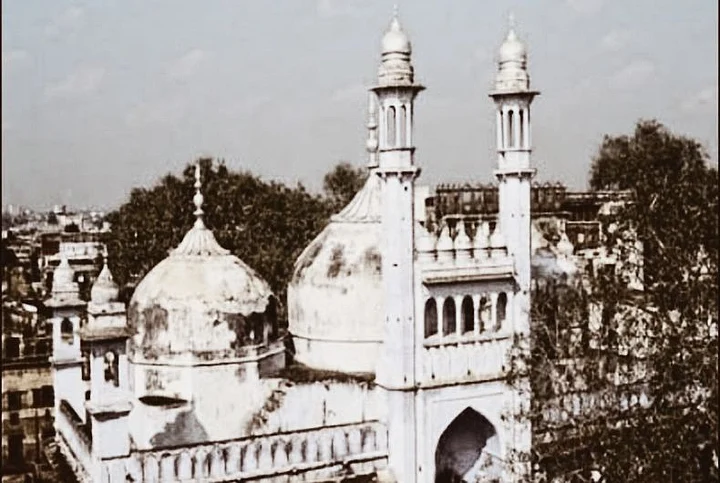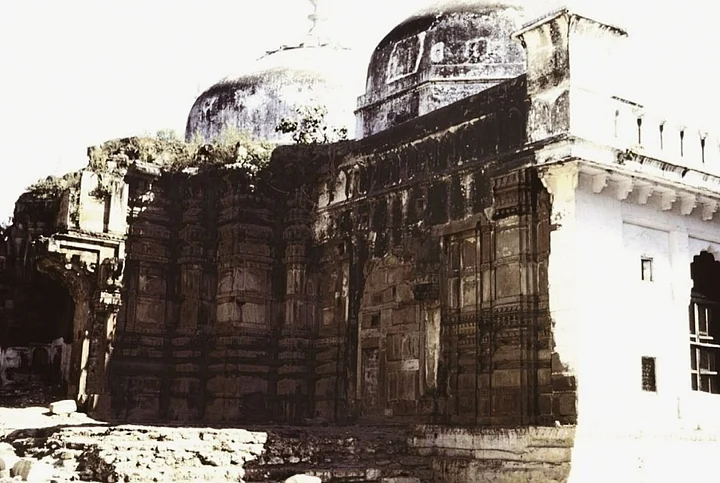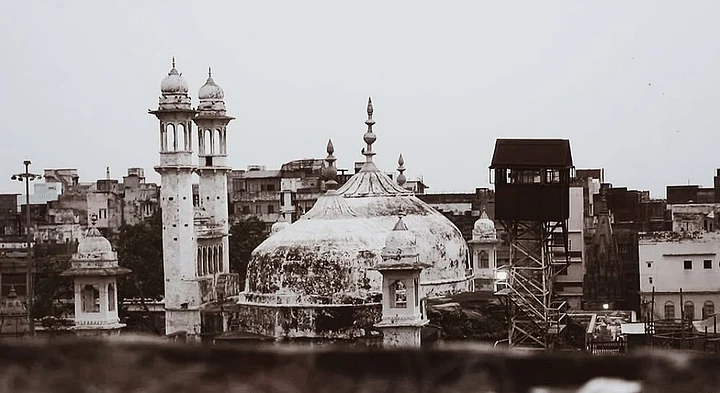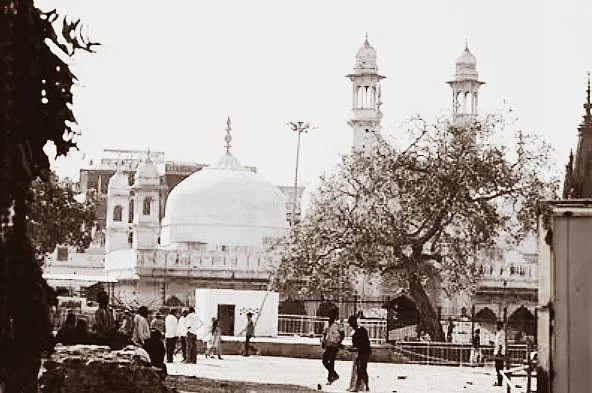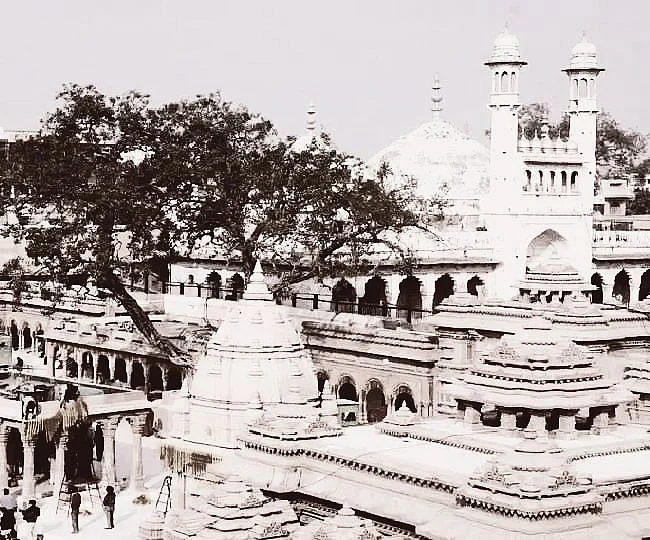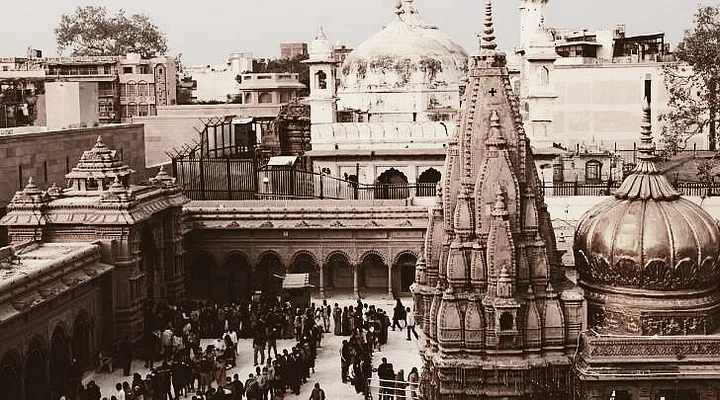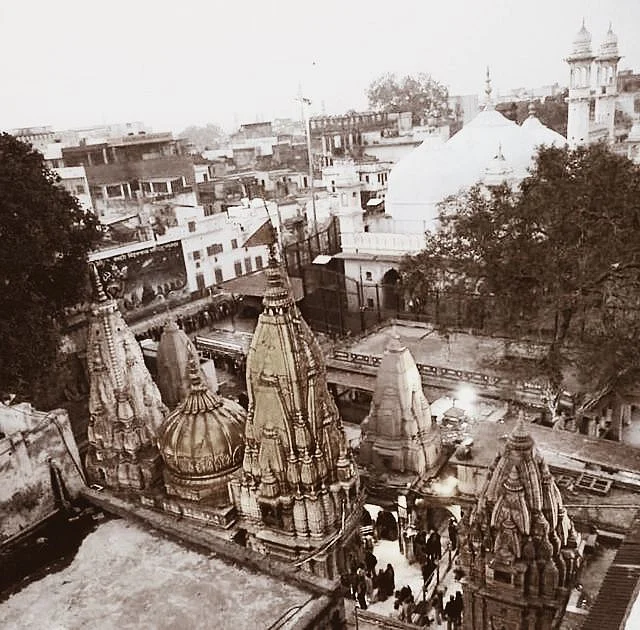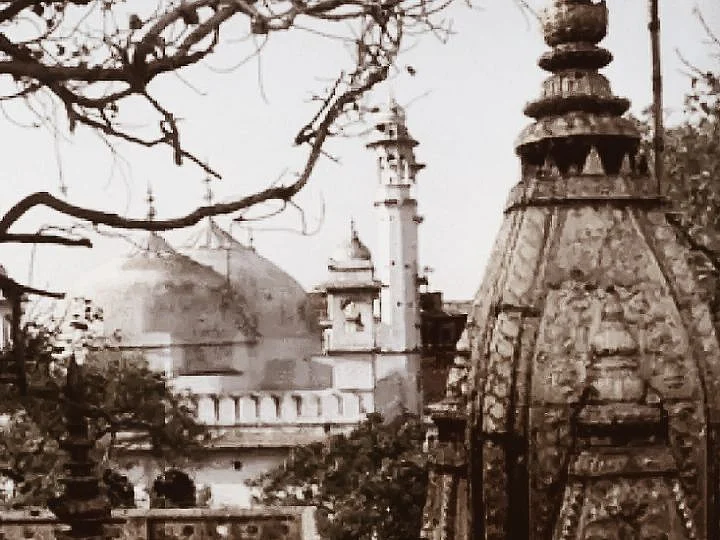(This story was originally published on 22 May 2022. It is being republished after Supreme Court disallowed survey of a structure inside the Gyanvapi Mosque.)
Video Editor: Purnendu Pritam
Why is a 300-year-old mosque in one of the world's oldest cities making headlines, locked in a three-decade tense, legal battle, stoking the fears of a Babri demolition rerun?
Built by Aurangzeb, after reportedly demolishing a temple rebuilt during Akbar's reigns, this mosque with a Sanskrit name is currently embroiled in controversy over claims of a Shivling (a stone shaft, usually black or white, representing Lord Shiva) found in its premises.
Here's deciphering the facts from fiction and decoding the Gyanvapi story, from the pages of history.
- 01/05
The Gyanvapi mosque
(Photo: Altered by The Quint)

- 02/05
The Gyanvapi mosque
(Photo: Altered by The Quint)

- 03/05
The Gyanvapi mosque
(Photo: Altered by The Quint)

- 04/05
The Gyanvapi mosque
(Photo: Altered by The Quint)

- 05/05
The Gyanvapi mosque
(Photo: Altered by The Quint)

Akbar, Aurangzeb, Ahilyabai: The Mandir-Masjid History
In a heavily barricaded, high security complex in Uttar Pradesh's Varanasi, a temple and a mosque overlook each other. Hindus and Muslims have prayed here next to each other for decades. The mosque with a 'Hindu' name stands adjacent to the Kashi Vishwanath temple – a very holy shrine for Hindus worldwide.
Its name derived from an adjacent well – which was a sacred site, called gyanvapi (the well of knowledge) – the Gyanvapi mosque was built in 1669 by Aurangzeb, the sixth Mughal emperor. The mosque was reportedly built on the ruins of the Kashi Vishweshwar temple – a 16th century Shiva temple.
The Kashi Vishweshwar temple had been rebuilt by Toder Mal, during the reign of Akbar – the third Mughal emperor. Toder Mal was Akbar's finance minister. The temple was reportedly partially demolished on the orders of Aurangzeb.
"The temple was torn down at the command of Aurangzeb. Half-dismantled, it became the foundation of the present Gyanvapi mosque. One wall of the old temple is still standing, set like a Hindu ornament in the matrix of the mosque."Diana L Eck, Professor of Comparative Religion, Harvard University (Source: BBC)
The patrons of the Vishweshwar temple are believe to have helped Shivaji – the Maratha ruler and enemy of the Mughal empire, escape from prison. And that angered Aurangzeb.
"Temples patronised by persons who had submitted to state authority but who subsequently became state enemies were often targeted by Mughal rulers."Richard M Eaton, Professon of South Asian History, University of Arizona (Source: BBC)
Legend says before Aurangzeb's soldiers could demolish the temple, the priests hid the Shiva idol in the adjacent well. And thus, the idol remained unharmed.
In 1780, Ahilyabai Holkar – the queen of Indore and a devotee of Lord Shiva, reconstructed a Shiva temple temple next to the Gyanvapi mosque. Maharaja Ranjit Singh, the king of Punjab, in 1835, sent two tons of gold which encased the sanctum sanctorum. This is the Kashi Vishwanath temple in its current form.
Lesser Know Facts About the Gyanvapi Mosque
Though adjacent to each other, the entry and exit points of the Kashi Vishwanath temple and Gyanvapi mosque are in different directions.
The mosque is a three-dome white structure, within a 20-feet barricade.
The entrance of the mosque is very similar to that of Taj Mahal.
The plinth of the 'demolished temple' reportedly mostly remains untouched and now serves as the courtyard of the mosque.
Ayodhya to Varanasi: The Mandir-Masjid Divide
Since 1984, the Vishwa Hindu Parishad (VHP) launched a nation-wide movement to 'reclaim' the sites of the mosques that they claimed were constructed by 'demolishing Hindu temples'. This included the Gyanvapi mosque.
The mosque first came into the news in 1991 when the BJP and VHP led a Ram temple movement in Ayodhya. 200 kilometres away in Varanasi, Hindu priests demanded the Gyanvapi mosque be handed over to them.
To counter the swelling up Ram mandir movement, the then Congress-led government in the Centre passed the Places of Worship (Special Provisions) Act in 1991, to majorly prohibit the conversion of any religious site.
Despite passing of the Act, months later the Babri masjid – a 16th century mosque – was razed to the ground by Hindutva leaders and activists in Ayodhya.
After a long legal battle, the Supreme Court in 2019, ruled in favour of a Ram temple in Ayodhya. Muslims were given a separate plot of land, to build a mosque. The apex court's verdict brought Gyanvapi back in to the limelight.
1991 to 2022 and Beyond? The Mandir-Masjid Fight
Two years later, five Hindu women petitioners moved the Varanasi district court seeking round-the-year access to pray at a 'shrine behind the western wall of the mosque complex'. They wanted permission to worship the idols of Shringar Gauri, Lord Ganesha, Lord Hanuman, and Nandi that are located on the outer wall of the Gyanvapi mosque, daily.
This site is currently open for Hindu prayers once a year – on the fourth day of the Chaitra Navratri.
8 April 2021: A Varanasi Court ordered the Archaeological Survey of India (ASI) to conduct a requested survey of the Gyanvapi mosque.
9 September 2021: Allahabad High Court stayed the survey by ASI.
26 April 2022: Varanasi Civil Judge ordered survey and videography by the advocate commissioner at the mosque complex.
Amid massive outrage and allegations of bias against the court-appointed commissioner of the survey Ajay Kumar Mishra, survey and videography was completed by 16 May 2022. It is being claimed that a shivling was discovered inside the mosque premises, by the inspection team.
This prompted the Varanasi court to order the controversial sealing of the part of the mosque where the shivling was reportedly found. But the mosque authorities claimed that the shivling was actually part of a fountain inside a wazookhana (restroom) of the mosque.
But even the Allahabad High Court refused to stay the order of the district court, despite an alleged violation of the Places of Worship Act.
On 19 May 2023, the Supreme Court has disallowed survey of a structure inside the Gyanvapi Mosque which Hindu plaintiffs claim is a 'Shivling.'
(This was first published on 24 May 2022. It has been republished from The Quint's archives after Supreme Court disallowed survey of a structure inside the Gyanvapi Mosque.)
